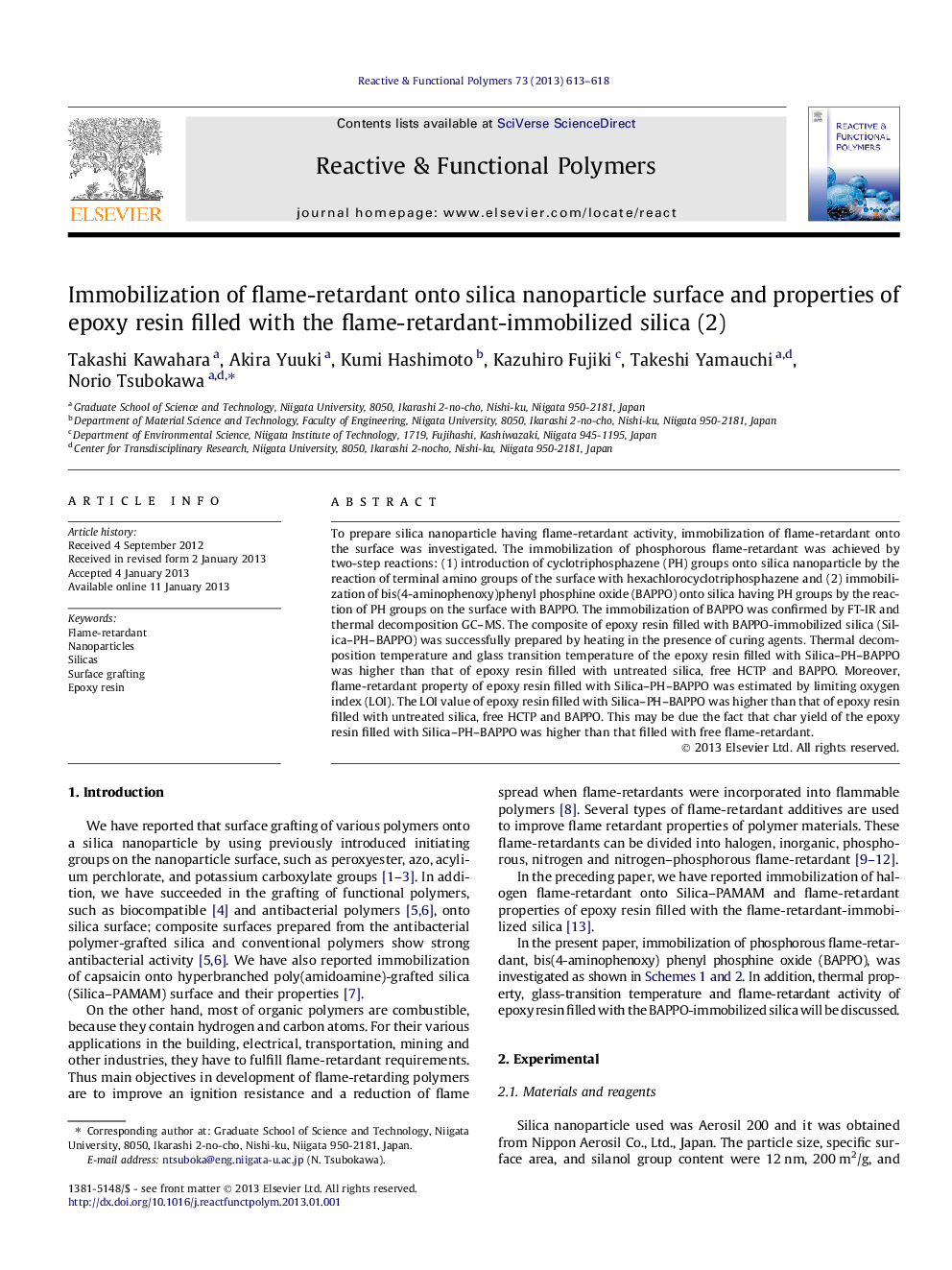| Article ID | Journal | Published Year | Pages | File Type |
|---|---|---|---|---|
| 5210054 | Reactive and Functional Polymers | 2013 | 6 Pages |
To prepare silica nanoparticle having flame-retardant activity, immobilization of flame-retardant onto the surface was investigated. The immobilization of phosphorous flame-retardant was achieved by two-step reactions: (1) introduction of cyclotriphosphazene (PH) groups onto silica nanoparticle by the reaction of terminal amino groups of the surface with hexachlorocyclotriphosphazene and (2) immobilization of bis(4-aminophenoxy)phenyl phosphine oxide (BAPPO) onto silica having PH groups by the reaction of PH groups on the surface with BAPPO. The immobilization of BAPPO was confirmed by FT-IR and thermal decomposition GC-MS. The composite of epoxy resin filled with BAPPO-immobilized silica (Silica-PH-BAPPO) was successfully prepared by heating in the presence of curing agents. Thermal decomposition temperature and glass transition temperature of the epoxy resin filled with Silica-PH-BAPPO was higher than that of epoxy resin filled with untreated silica, free HCTP and BAPPO. Moreover, flame-retardant property of epoxy resin filled with Silica-PH-BAPPO was estimated by limiting oxygen index (LOI). The LOI value of epoxy resin filled with Silica-PH-BAPPO was higher than that of epoxy resin filled with untreated silica, free HCTP and BAPPO. This may be due the fact that char yield of the epoxy resin filled with Silica-PH-BAPPO was higher than that filled with free flame-retardant.
